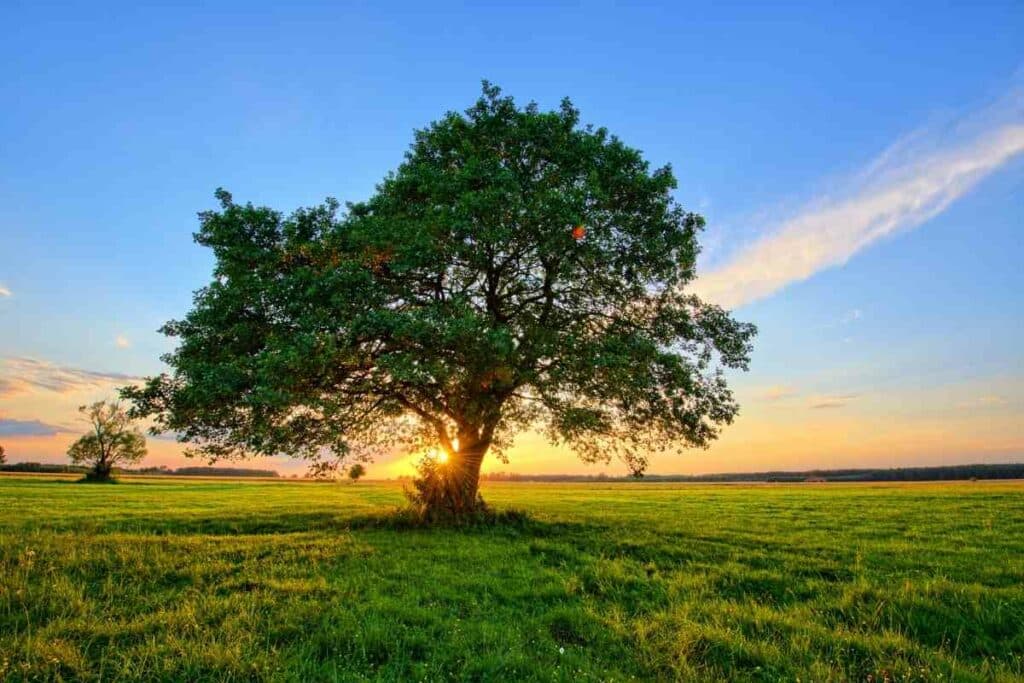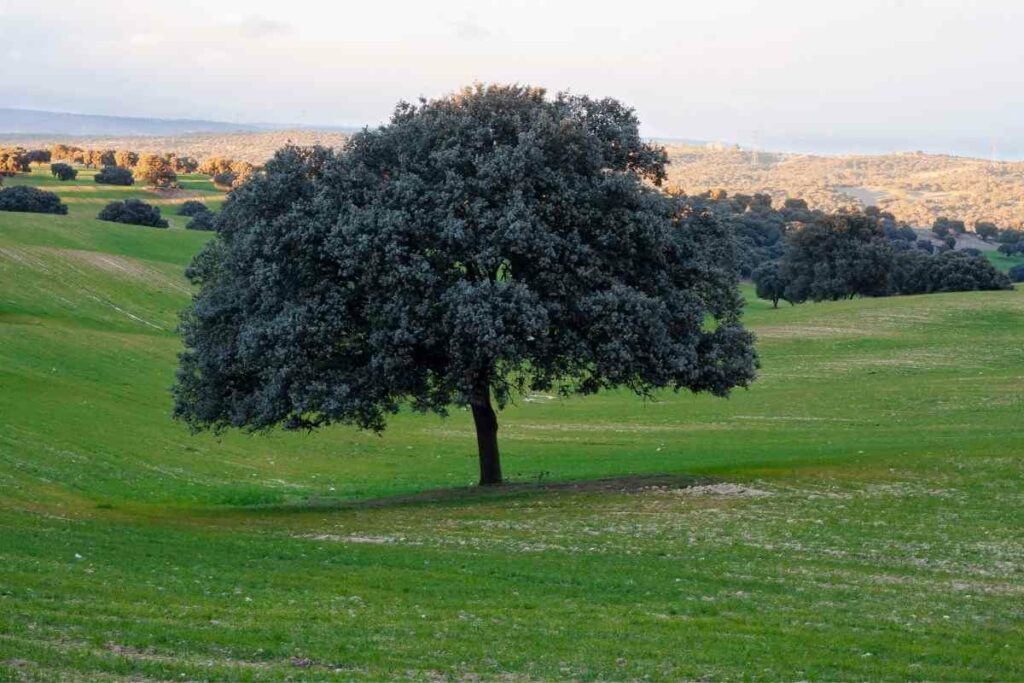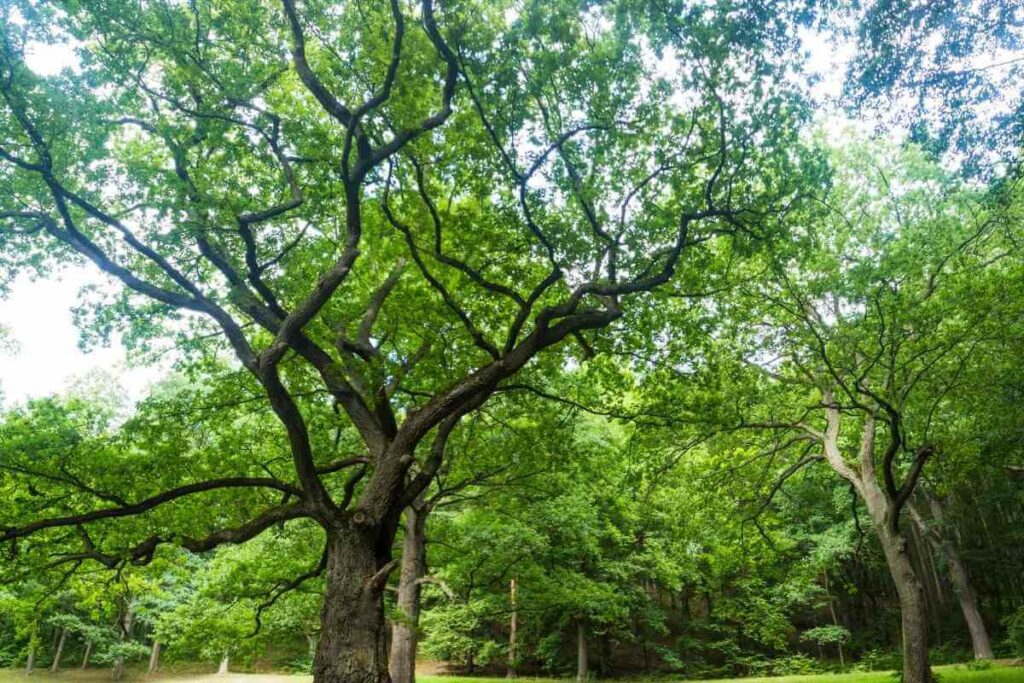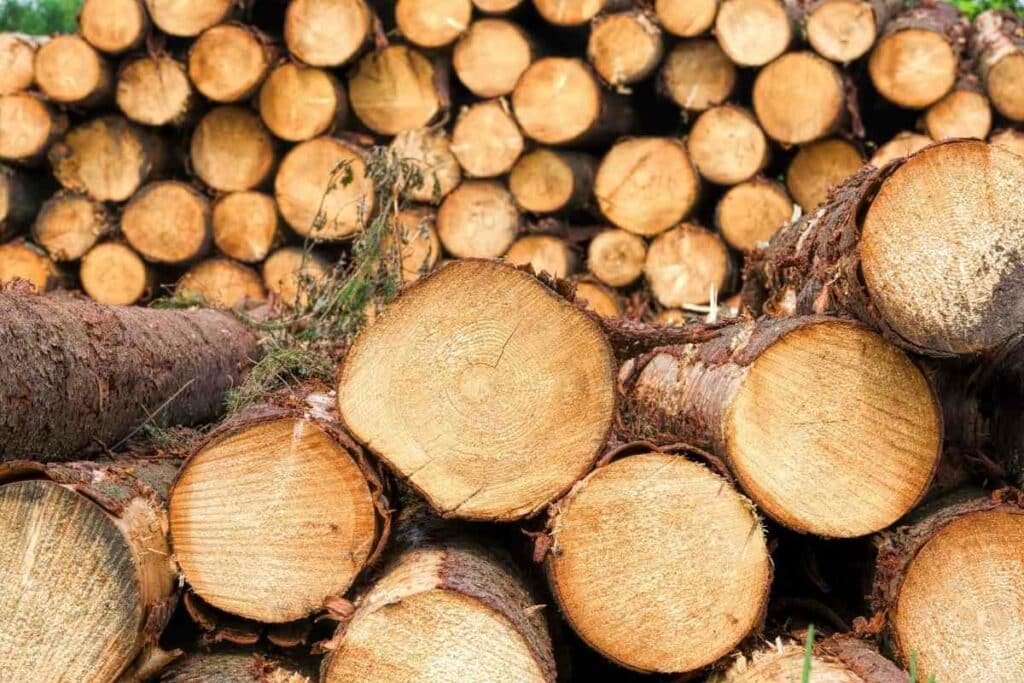The average weight of a 10-to-15-inch diameter tree is 45 to 55 pounds. The approximate range of weight for living trees spans from 1,000 pounds to about 2 million pounds.
This broad range is a result of many different factors.

Some of these factors include density, volume, the tree’s height, diameter, type of wood (hardwood or softwood), and whether the tree has leaves.
Other factors like tree type and age also significantly impact the overall tree weight.
What to Expect? We will discuss in-depth how each of these factors affects tree weight and will detail how to calculate tree weight.
Height
Height is the foremost factor that influences the weight of a tree directly.
Taller trees weigh more than their shorter counterparts.
For Instance – 80-feet-tall hardwood trees weigh 18,000 pounds more than 50-feet-tall pine trees.
But this generalization doesn’t always hold true. Shorter trees with wider girths are heavier than tall trees with comparatively less diameter.

The height of a tree is easy to measure, provided you have the right equipment, and is a good place to start when calculating a tree’s approximate weight.
Diameter
One of the major factors influencing tree weight is the diameter. Diameter directly correlates with weight.
An implication of this would be that as the diameter of the tree increases, so does the weight.
For instance, a hardwood tree of 12 inches in diameter and of average height weighs approximately 1,500 pounds, whereas a 26-inch diameter hardwood tree of regular height weighs 8,400 pounds—almost triple the weight.
Simply looking at two trees will tell you which one has a wider cross-section.

And while you can estimate the tree diameter, it is also possible to measure it precisely. Finding the diameter of the tree will help with estimating the overall weight.
In order to find the diameter of the tree, you must first find the circumference at the breast height.
Breast height is usually 55 inches above the ground, and circumference is the full curve length around the tree.
These are general numbers to follow, but every tree species will have varying measurements. Generally, using the measured circumference, you can find the diameter.
Volume
The volume of a tree and its weight are directly proportional, meaning that as one value increases, so does the other.
As a result, volume is a direct factor influencing tree weight.
Volume is also the key component used to determine the formula of tree weight.

Since there is virtually no way to estimate the volume of a tree, calculating it is just as much of a challenge as calculating tree weight.
You can estimate a tree’s volume based on:
- its species
- age
- and where it grows
Reference a tree guide or contact a forester who will give you a better approximation.
Hardwood Vs. Softwood
The type of wood a tree has contributes to its overall weight:
- Hardwood trees generally tend to weigh more than softwoods. A hardwood tree is one that produces seeds with a coating that have the potential to develop into fruits or nuts.
- A softwood tree produces seeds with no external coating that simply drop to the floor and don’t develop into seeds or nuts.
The reason why hardwoods are heavier than softwoods is that their structure makes them denser.

For instance, beech trees are hardwood trees that weigh around 45 pounds per cubic foot, while cypress trees, which are softwood trees, only weigh 32 pounds per cubic foot.
The difference in weight is quite evident, but remember that it isn’t a single factor that determines weight.
The culmination of all the aforementioned factors is what gives you the weight of a tree.
Density
In the previous section, we brushed on the topic of density.
Tree density refers to the percentage of land covered by the tree in its growing area.
Estimates of density can help calculate the biomass of a tree. The most common approach to calculating tree density is based on canopy cover.

Density is again directly proportional to weight, so denser trees are generally heavier. Calculating tree density will help you estimate the overall weight of a tree.
Leaves
You might not think that leaves have a significant impact on tree weight.
However, leaves are, in fact, one of the most important factors that influence tree weight.
The amount of weight leaves contribute to the tree is immense. The type and number of leaves are further things to consider.
Larger Leaves – Like that of the banana and coconut tree, are heavier compared to a tree with a collection of smaller leaves.
But there are opposite circumstances, too; for instance, the magnolia trees bear many leaves, which form a significant portion of the tree’s overall weight.
Species
The culmination of the above-discussed features comes to light when discussing the impact of species type on tree weight.
All the above-mentioned factors vary based on the species of the tree.

Each trait can be expressed differently, so there is no shortcut way to determine weight. For instance, factors like density and height may clash.
The weight of a tree is the product of a complex array of traits at interplay.
There are, however, recorded extremes.
Impressive Fact – The heaviest tree in the world is Giant Sequoia—weighing in at 6,167 tons, with a volume of 1,487 cubic meters, and a height of over 300 feet.
While there is no official record of the lightest tree in the world, the Balsa tree is generally considered to be the lightest because it has the lightest and softest commercially sold wood.
Calculate the weight of a tree using this formula
There isn’t a single formula that can be used to calculate the weight of a tree, as the weight of a tree can depend on a variety of factors such as the species of the tree, its size, the density of its wood, and the moisture content of the wood. Here are a few different formulas that can be used to calculate the weight of a tree, depending on the specific information that is available:
- If you know the volume of the tree in cubic meters and the density of the wood, you can use the following formula to calculate the weight of the tree:
Weight = Volume * Density
For example, if the volume of the tree is 0.25 cubic meters and the density of the wood is 700 kg/m^3, the weight of the tree would be:
Weight = 0.25 * 700 = 175 kg
- If you know the diameter of the tree at breast height (DBH) and the height of the tree, you can use the following formula to estimate the weight of the tree:
Weight = (0.35 * DBH^2 * Height) / 100
This formula is based on the assumption that the tree has a cylindrical shape, with a uniform distribution of mass. The DBH should be measured in centimeters and the height of the tree should be measured in meters.
For example, if the DBH of the tree is 50 cm and the height of the tree is 20 meters, the weight of the tree would be:
Weight = (0.35 * 50^2 * 20) / 100 = 8750 kg
- If you know the mass of the tree’s leaves, branches, and stem separately, you can add them together to calculate the total weight of the tree. This can be useful if you have access to a scale and can weigh each part of the tree separately.
Final Thoughts
There is no standard weight that trees have. There are only averages calculated across a spectrum of factors and species.
Understanding tree weight is useful for many reasons.
It can be used to determine a tree’s biomass, feasibility when it comes to usage and transport, its involvement in the ecosystem, etc.
Accounts of tree weight by species are usually collected and maintained by professional foresters and botanists.


